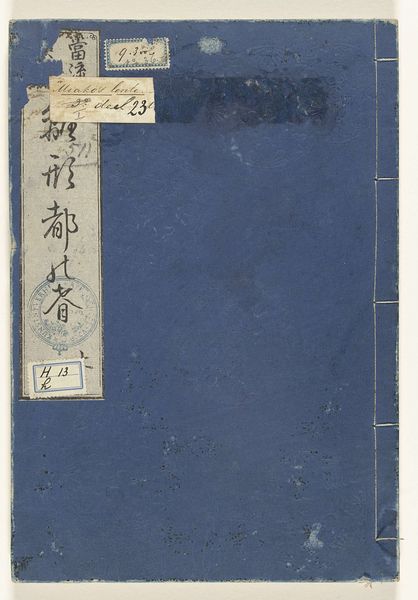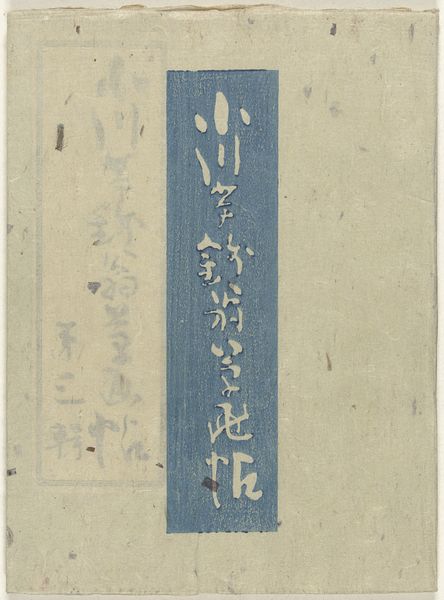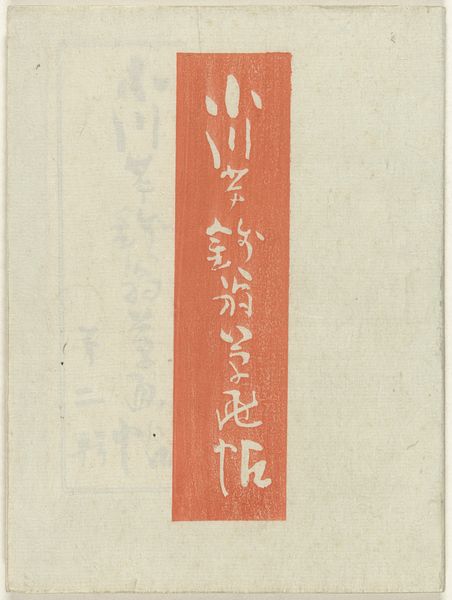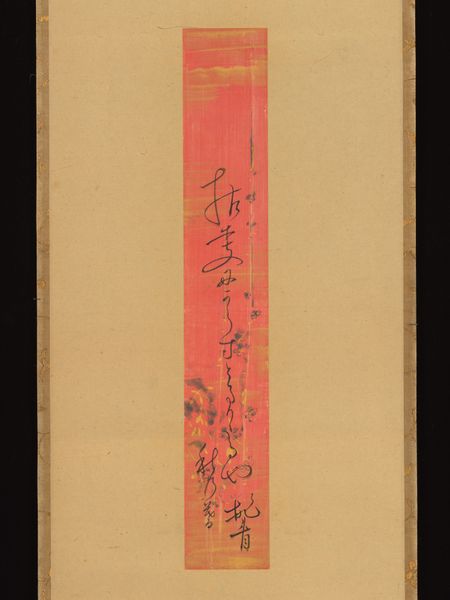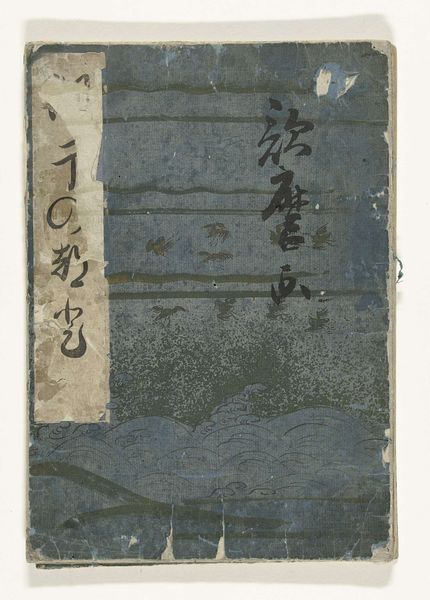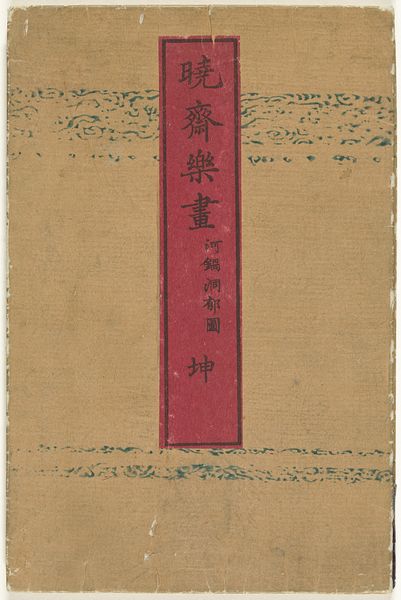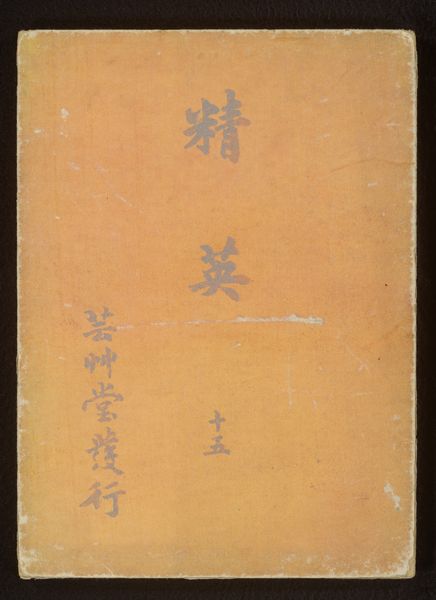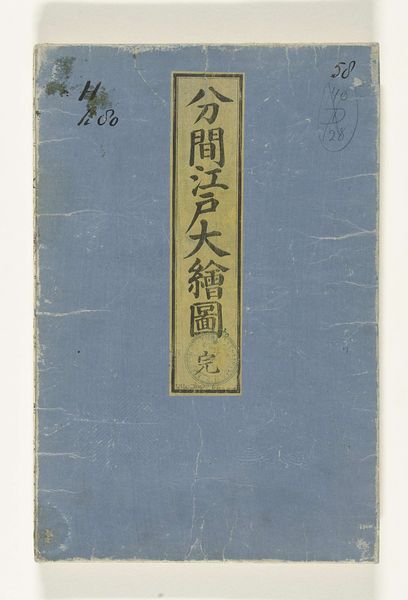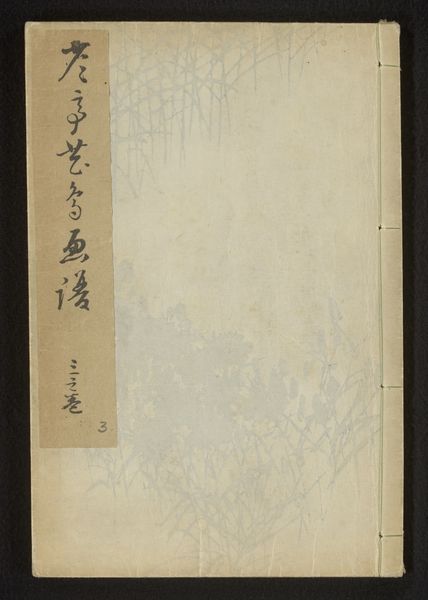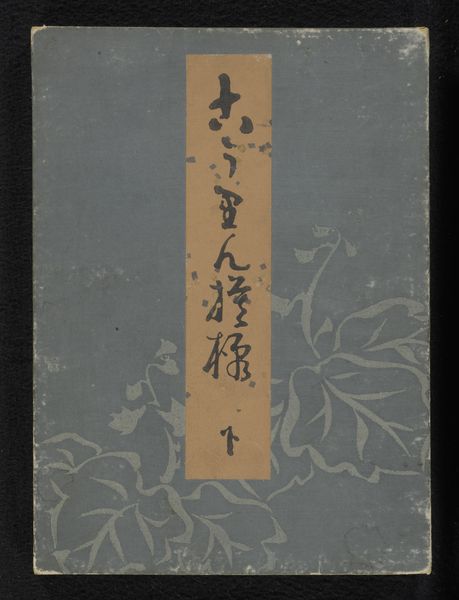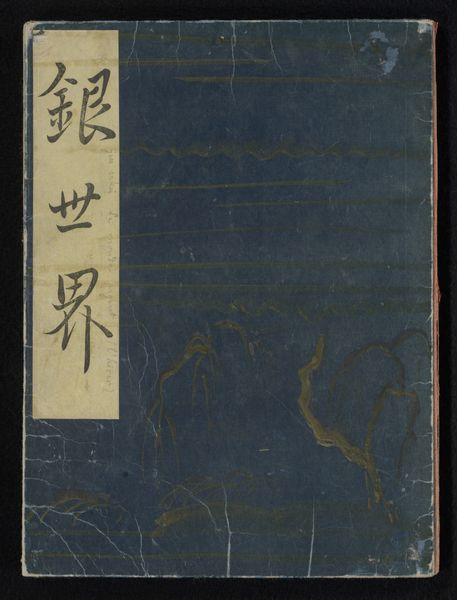
Dimensions: height 222 mm, width 153 mm
Copyright: Rijks Museum: Open Domain
Curator: Welcome. Before us, we have “Golven brekend tegen de hemel - deel drie,” a print from 1907 currently held in the Rijksmuseum. The artist is Koda Rohan. Editor: The muted color palette really draws me in. It feels tranquil, almost meditative. There’s something compelling about the blend of typography with geometric wave patterns that gives the artwork a certain calming quality, despite the power of its central image. Curator: The artist employs a wonderful use of negative space. This Ukiyo-e style artwork utilizes print, graphic art, typography, coloured pencil, and blue ink drawing. Contextually, one cannot ignore the colonial implications in its production and display. Who were its intended audiences, and what cultural dialogues, or silences, were at play? Editor: Thinking about the process itself, you've got this overlay of text with, it appears, a drawing or illustration. It makes me think about the materials they were using. This blend of materials would speak to class implications, consumption, and distribution in its own historical context. Curator: Exactly. The artist’s exploration of such a sublime scene can be seen as the exploration of the human experience within the grand, historical context of colonial Japan, filtered through a carefully designed lens. It invites us to question representations of nature and identity, as a way of comprehending political anxieties of the era. Editor: The wave motif also connects it to wider cultural dialogues and commodity exchange around aesthetics. We must look at how this was circulated. Was it intended for the masses, and what are its origins in production and making of the piece itself. The act of repeating the wave as a type in print can almost take away the individual's power, emphasizing the larger body politic as a type to be sold as material. Curator: Thinking about this print as more than an isolated piece of art provides a broader reflection on issues of identity in an era defined by rapid cultural changes and the power of representation, giving this work a strong historical and cultural power beyond its mere image. Editor: And focusing on how such pieces were produced and distributed allows us a different view on that same time. Thinking about the people making it, those materials, even the intended consumer brings art and historical meaning to life. Curator: Indeed. Viewing artwork through multiple perspectives ensures that we uncover a richness of experience. Editor: I’ll second that! Looking at this work has been quite a process. Thank you.
Comments
No comments
Be the first to comment and join the conversation on the ultimate creative platform.
